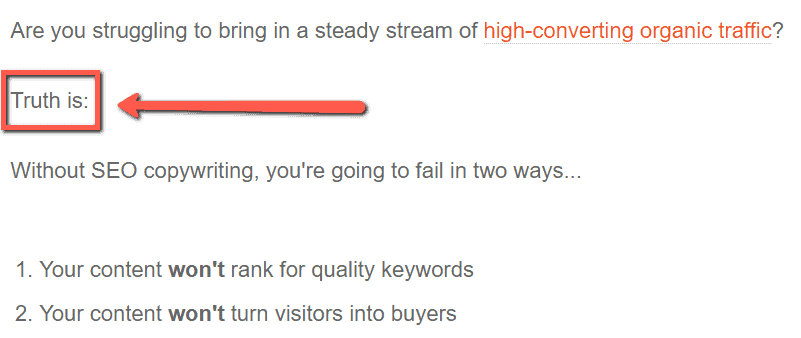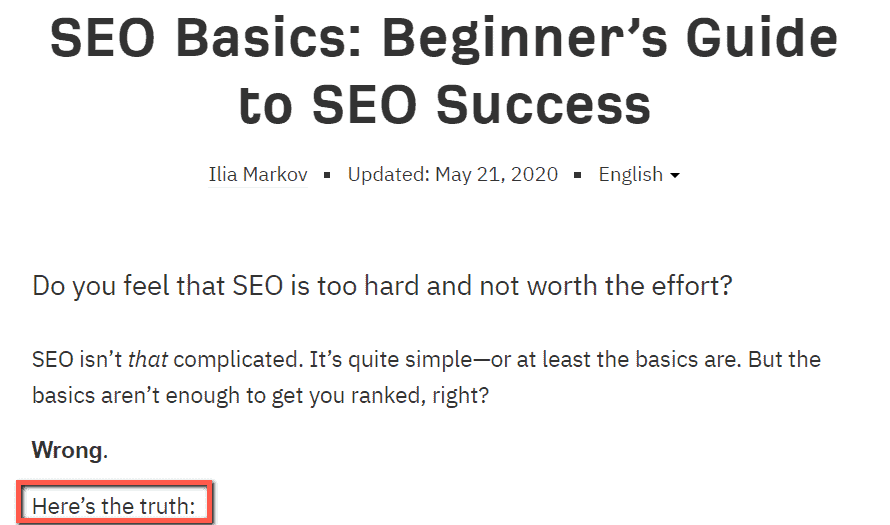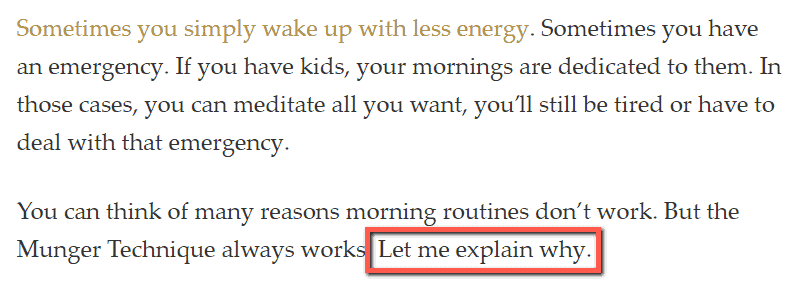Last Updated on 2 years by Christopher Jan Benitez
When it comes to effective copywriting strategies, a whopping 91% of content marketers are “all in”.
And wouldn’t you agree it’s a powerful statement that sums up how content marketers believe in excellent writing?
So, here’s an excellent copywriting strategy: Use bucket brigades.
In this post, let’s discuss what a bucket brigade is and what it means in copywriting and content writing. You’ll even get tips on how to use them.
What is a bucket brigade?
The term bucket brigade is also called a human chain. It’s a method for transferring goods from one person to the next.
Before fire engines came into the picture, it was the go-to solution that allowed anyone to transport goods to a far destination. And for this reason, you can see why the method is praised in the firefighting industry.
Below, you’ll find an image of a bucket brigade.

(Source)
As you can see, they literally pass buckets of water from one person to another to put out the fire!
Now, what is a bucket brigade in copy writing?

A bucket brigade in copywriting, also known as the “grease slide copy,” is a classic magnetic writing technique.
It is a bridge word or phrase. And it encourages site visitors to remain on your website and keep reading your content.
Below is an example of bucket brigades from Robbie Richards’ post called SEO Copywriting: 15 Killer Techniques (With Examples and A/B Test Results).

The author used “Truth is” in that image as his bucket brigade. And based on these words, the reader will stick around for what the author says.
That is if they want to know the truth. If the reader couldn’t care less about the truth, they’ll scoot.
However, let’s be realistic. And put yourself in a reader’s shoes.
If someone tells you something like “Truth is,” wouldn’t you also want to stick around?
It’s understandable if you do!
Related: How Keyword Intent Can Boost Your Conversion Rate
Why use the bucket brigade technique?
Asking the reader to listen to what you have to say in your article is a simple question. You’re asking too much, though. So, establish that your blog post can flow seamlessly.
And luckily, you can use bucket brigade phrases to spruce up your writing on landing pages, sales letters, blog writing, or any written content!
Here’s a look at the benefits:
Increases dwell time and reduces bounce rate
Dwell time refers to the time visitors spend on your site. Meanwhile, bounce rate refers to the percentage that these visitors exit your site after viewing a single page.
Dwell time and bounce rate go hand in hand and are inversely proportional to each other. Therefore, when your page has a high dwell time, its bounce rate will likely slide.
And this is where general bucket brigades can help in your SEO copywriting. They can improve both factors by making your page’s content worth checking out!
To elaborate on this point, picture how you would react to this tidbit from Neil Patel’s 6 Copywriting Tips That’ll Keep Readers Eyes Glued to Your Screen.

If someone asks you, “What does that mean for you?” you’d stay on the page. And because this tidbit appears in the post’s second sentence, your interest was captured, and you’re less likely to bounce.

Improves user experience
Think of this like you’ll make a great impression on every visitor. And if visitors are happy with your site’s overall performance, they’ll return.
Bonus: They may even give you free advertising and invite their family and friends.
Here’s how bucket brigades and grease slide phrases fire up the user experience:
- Engages readers – Bucket brigade writing keeps things interesting. They tell the readers that there’s information waiting for them.
- Makes content easy to read – It makes your content scannable and not difficult to understand. Using Grammarly or other grammar checkers helps with this.
- Grabs attention – Bucket brigades are conversational. And thus, users stop and pay attention to them.
Increases rankings on search engines
Improvement of dwell time, bounce rate, and user experience all lead to this. And when your rankings on search results are high, you can expect a desirable outcome:
A boost in your conversion rates and sales.
For a winning example, let’s take a page from Brian Dean’s playbook — SEO Copywriting: 17 Powerful Secrets.
On that page, he covers bucket brigades. There, he writes that he adapted bucket brigades, and “the results are crazy.”
All over his blog, he walks the talk by using bucket brigades.
And if you want proof that his copywriting technique works, why not determine how much time people spend on his blog?
To save you time from conducting your research, let me tell you about it: in 4 minutes!

How to use bucket brigades
Already gave readers all the information they need? Well, it makes sense if they’re itching to leave your site.
However, if you have something else that you believe is as useful for them, tell them. And that’s where you let bucket brigades enter the picture.
Now, we’ll discuss the specific ways to use bucket brigades:
Introduce your article
Using bucket brigades to introduce the topic you’re about to discuss is a way to keep things interesting from the start. And it’s a great idea considering you’re at the point where it’s crucial to grab people’s attention.
Below is a screenshot of a post that uses a bucket brigade in the introduction.

You can find this if you unearth posts in the Ahrefs blog. Wondering why I decided to use this as an example?
Simple. It’s because it introduces and supports the title of the article. It also contradicts a previous statement that beginners in SEO may find relatable.
Want to use bucket brigades this way, too? Then here are five common bucket brigade examples for you:
- Let’s get started
- I’ll show you
- Here’s the truth
- It’s time to begin
- Now, off we go
To explain
One of the purposes of a bucket brigade is to tell readers you want to elaborate on a claim.
They’ll hop on to another site if they don’t understand your reason for a claim they disagree with.
So, throw in a bucket brigade that lets them know you want to talk about why you decided to stick to specific claims. Then you’ll still have them in your space.
Below is a screenshot of a post that uses a bucket brigade to explain.

It’s grabbed from a blog about productivity, Darius Foroux. In the post, the author talks about the Munger Technique.
He plans on convincing readers that it works. And the bucket brigade “Let me explain why” helps him out.
Want to use bucket brigades this way, too? Then here are five common bucket brigade examples for you:
- In my experience
- Think about it
- Let me explain why
- To make a point
- Based on the results
Transitioning to a different angle
Are you planning to use bucket brigades in the middle of detailed discussions?
They help make both arguments worthy of consideration. Using them is like telling readers to hear out an opposing statement.
Below is a screenshot of a post that uses a bucket brigade to make a seamless transition.

It’s taken from a post from a finance blog, Making Sense of Cents. I went for this example because the entire article focuses on how the author became successful in real estate.
She starts by detailing what she does and shares tips on how to succeed. And when she transitions to a different point of view, she uses the bucket brigade, on the other hand.
Want to use bucket brigades this way, too? Then here are five common bucket brigade examples for you:
- On the other hand
- But wait — there’s more
- And as if that is not enough
- Then again
- Now for the other part of the story
Related post: 5 Ways to Be a Better Copywriter (and Get More Business)
Final thoughts
Without a doubt, the bucket brigade copywriting technique works. Using too many of them, though, is not a good idea. Instead, be strategic and use tools that point out which area or page of your site needs some work.
Crazy Egg’s heatmap and Google Analytics are examples. It can help you identify areas in your content that don’t appeal to visitors.
Now, edit these places, and off you go to enjoy a boost in the search rankings of your blog post and conversion rates of your sales pages!
Learn To Write Copy That Ranks AND Converts! ✍️
Write conversion, persona-based copy from over a decade of manipulating many search engines, but mainly Google.

